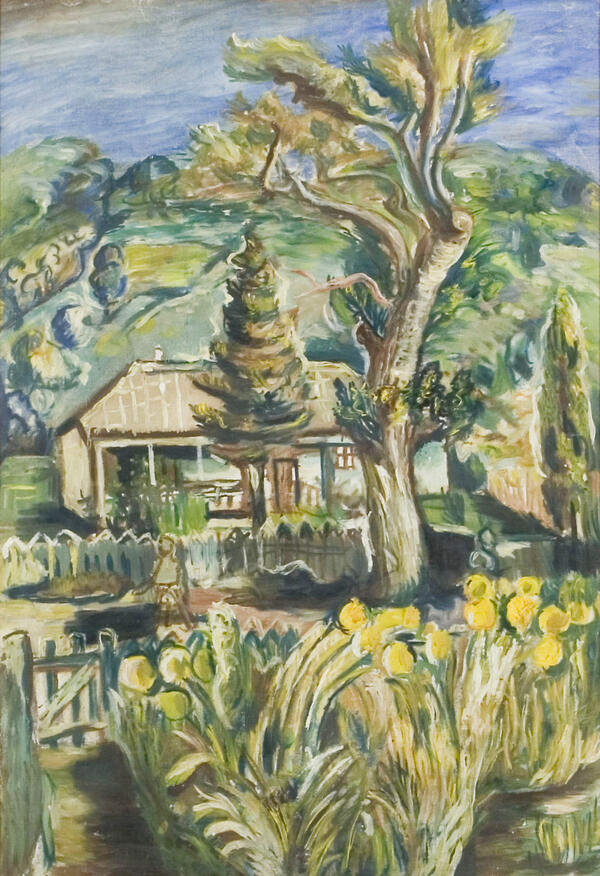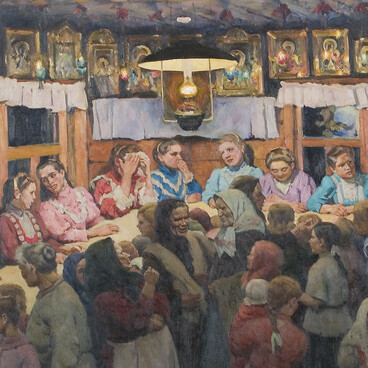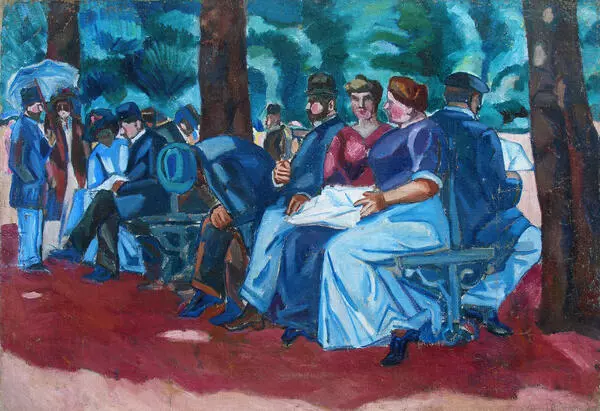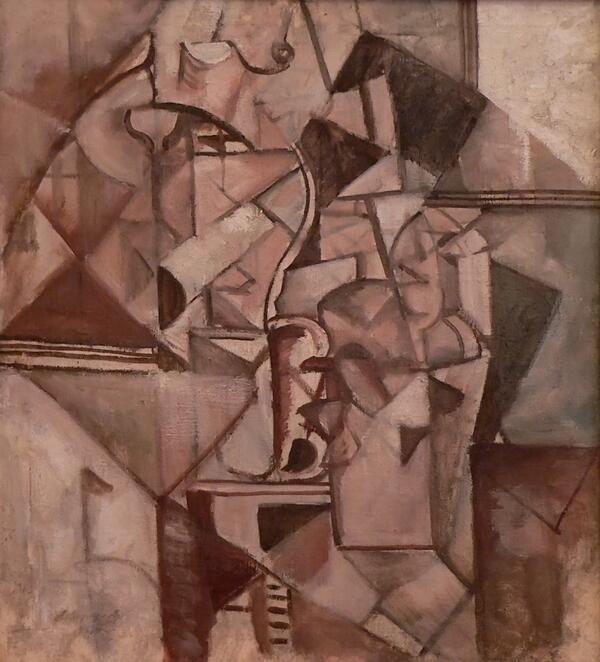Alexey Alexeyevich Morgunov was a painter, graphic artist, and one of the leaders of Russian avant-garde. He was born in 1884 in Moscow. He was an illegitimate son of the famous Russian artist and landscape painter Alexey Kondratyevich Savrasov. He studied at the Stroganov School and in the private studios of Konstantin Korovin and Sergey Ivanov. In 1904, he was accepted into the Moscow Association of Artists.
He traveled a lot in Germany, France and Italy. There, Alexey Morgunov got acquainted with the works of old masters, and also studied modern Western European painting. He was particularly fascinated by the Barbizon artists and Édouard Manet. That trip stimulated his studies of art history.
After joining the “Jack of Diamonds” society, the artist became close to Mikhail Larionov, one of the founders of Russian avant-garde, and participated in his exhibitions. The influence of the “Jack of Diamonds” philosophy on the early work of Alexey Morgunov was crucial. He was a member of the group “Objective Analysis” and a member of Proletkult (an experimental Soviet artistic institution dedicated to promotion of proletarian culture). Later, due to his close collaboration with Kazimir Malevich, Morgunov created Cubo-Futurism-inspired paintings and various works in the style of other trends popular at that time. The artists also worked together on performance art intended to shock the public, for instance, they walked with wooden spoons on the lapels of their jackets in 1914. In the second half of the 1920s, Morgunov turned to traditional figurative art.
The painting “Courtyard in Khosta”, created in the style of Neo-Primitivism, shows a strong influence of French art, especially the expressive style of the modernist trend — Fauvism. Its characteristic techniques are the generalization of form and space, volume and pattern, and the reduction of form to simple outlines, as well as the disappearance of chiaroscuro and linear perspective.
Interestingly, in the mid-1920s, Alexey Morgunov decisively moved away from the traditions of the avant-garde and other experimental art forms. Later, he turned to Socialist Realism and created works in the spirit of the Neoclassicism. In this regard, the canvas “Courtyard in Khosta”, painted by the artist shortly before his death in 1931, is a peculiar sign of respect for those art trends to which he gravitated in the early period of his career.
He traveled a lot in Germany, France and Italy. There, Alexey Morgunov got acquainted with the works of old masters, and also studied modern Western European painting. He was particularly fascinated by the Barbizon artists and Édouard Manet. That trip stimulated his studies of art history.
After joining the “Jack of Diamonds” society, the artist became close to Mikhail Larionov, one of the founders of Russian avant-garde, and participated in his exhibitions. The influence of the “Jack of Diamonds” philosophy on the early work of Alexey Morgunov was crucial. He was a member of the group “Objective Analysis” and a member of Proletkult (an experimental Soviet artistic institution dedicated to promotion of proletarian culture). Later, due to his close collaboration with Kazimir Malevich, Morgunov created Cubo-Futurism-inspired paintings and various works in the style of other trends popular at that time. The artists also worked together on performance art intended to shock the public, for instance, they walked with wooden spoons on the lapels of their jackets in 1914. In the second half of the 1920s, Morgunov turned to traditional figurative art.
The painting “Courtyard in Khosta”, created in the style of Neo-Primitivism, shows a strong influence of French art, especially the expressive style of the modernist trend — Fauvism. Its characteristic techniques are the generalization of form and space, volume and pattern, and the reduction of form to simple outlines, as well as the disappearance of chiaroscuro and linear perspective.
Interestingly, in the mid-1920s, Alexey Morgunov decisively moved away from the traditions of the avant-garde and other experimental art forms. Later, he turned to Socialist Realism and created works in the spirit of the Neoclassicism. In this regard, the canvas “Courtyard in Khosta”, painted by the artist shortly before his death in 1931, is a peculiar sign of respect for those art trends to which he gravitated in the early period of his career.





